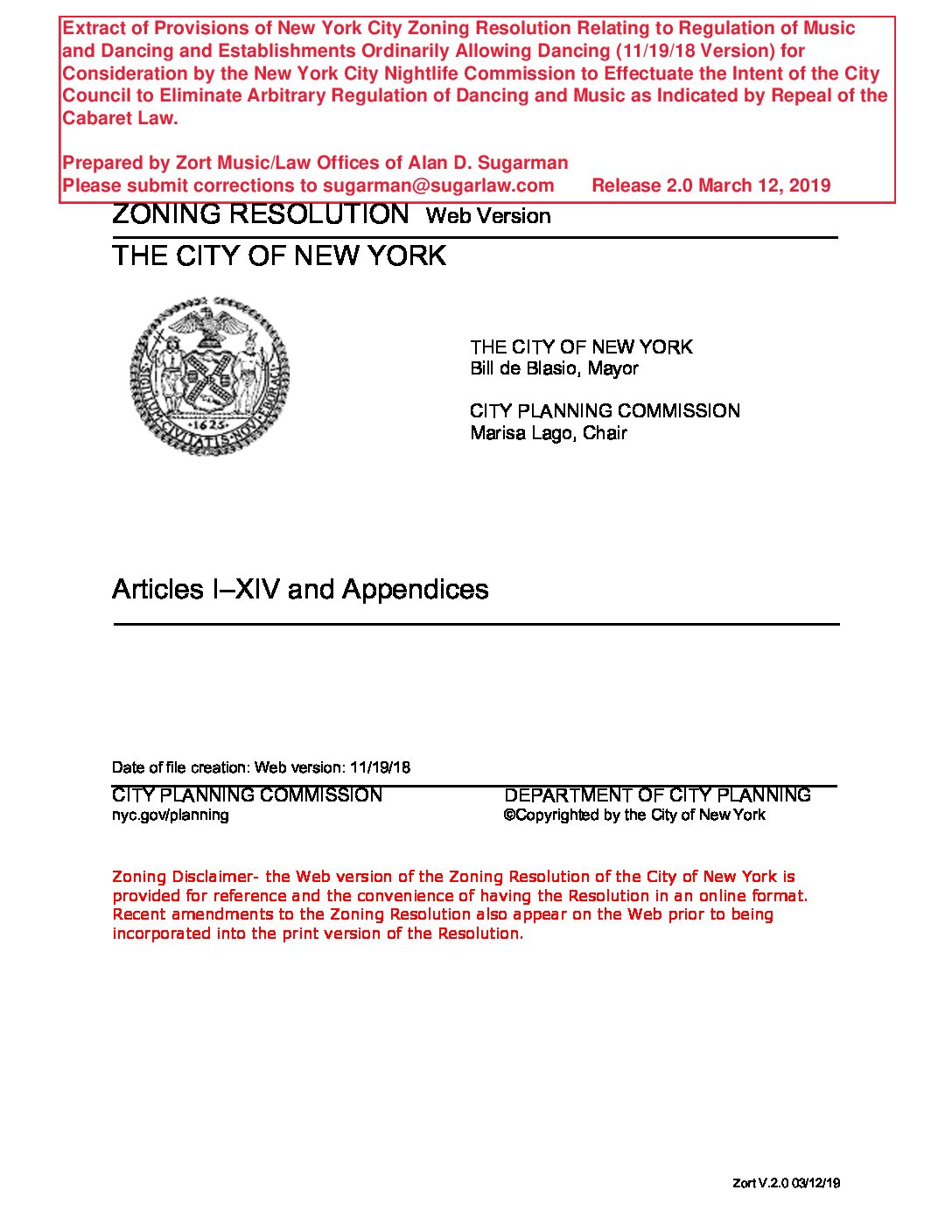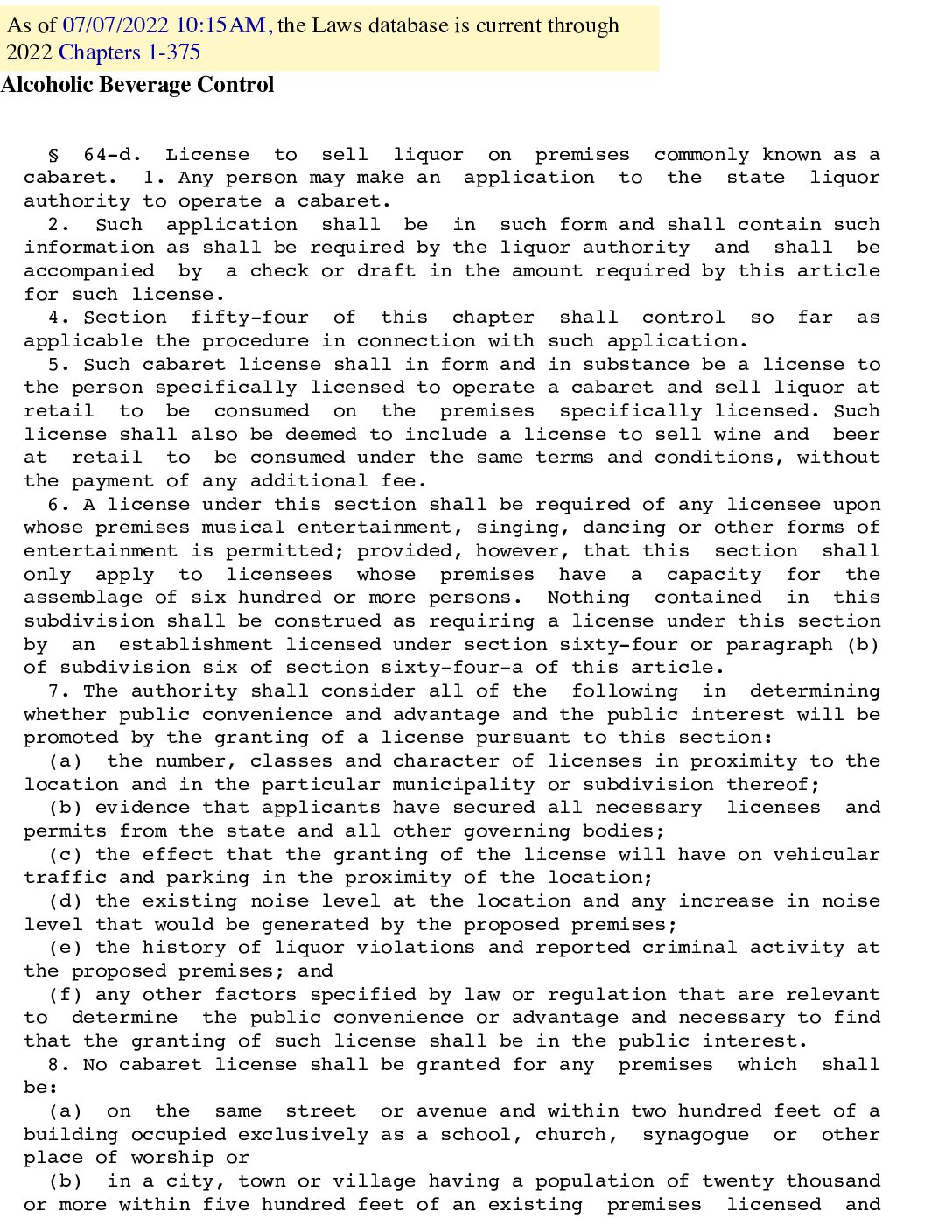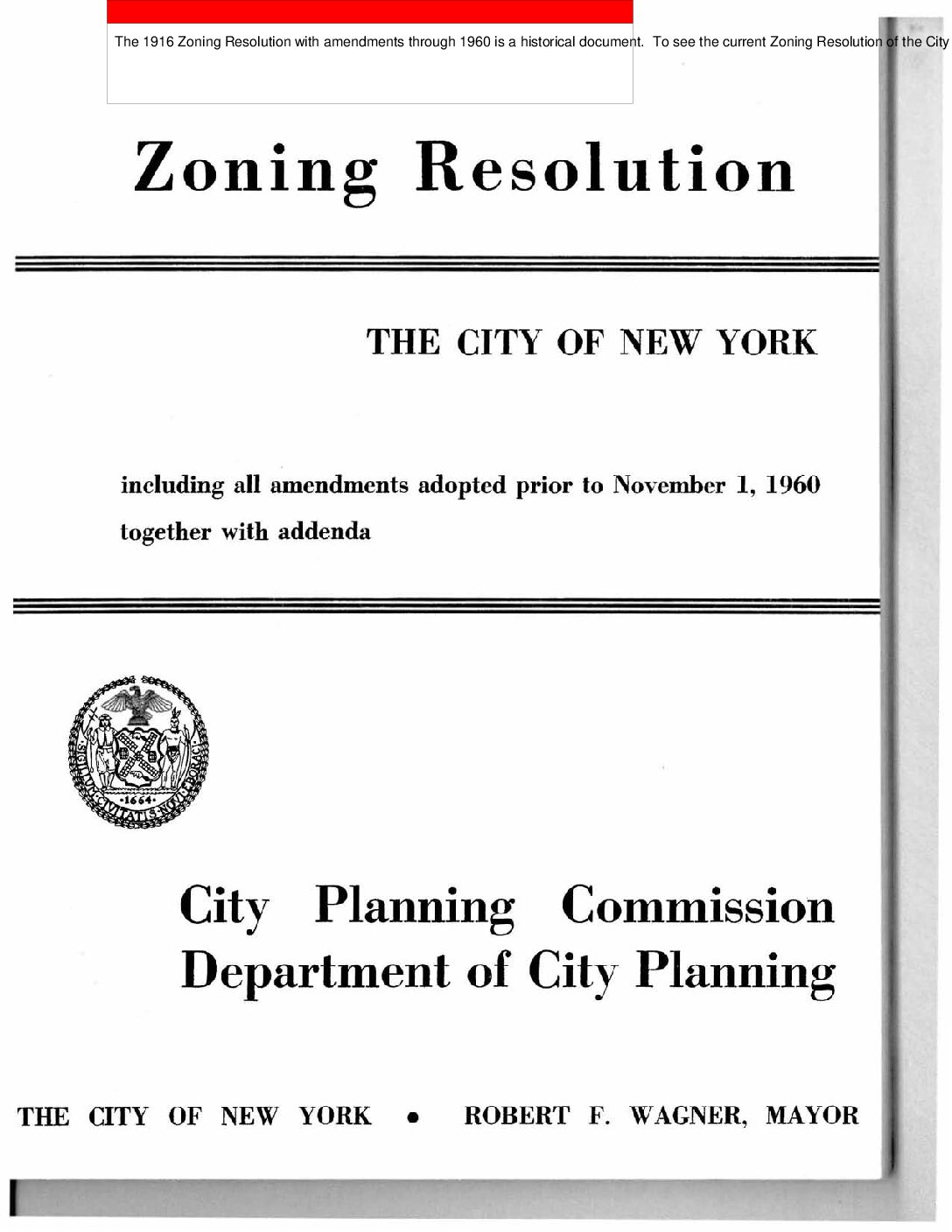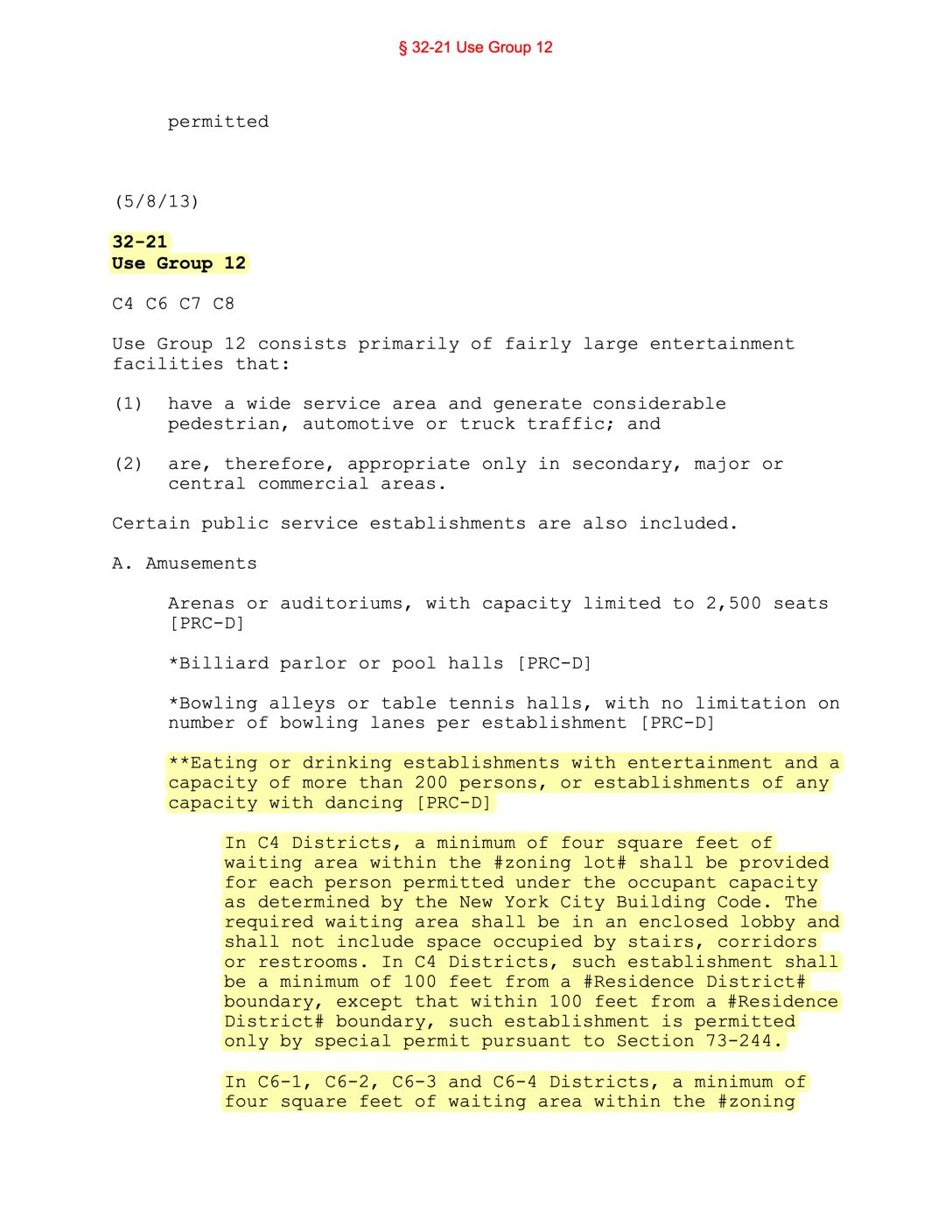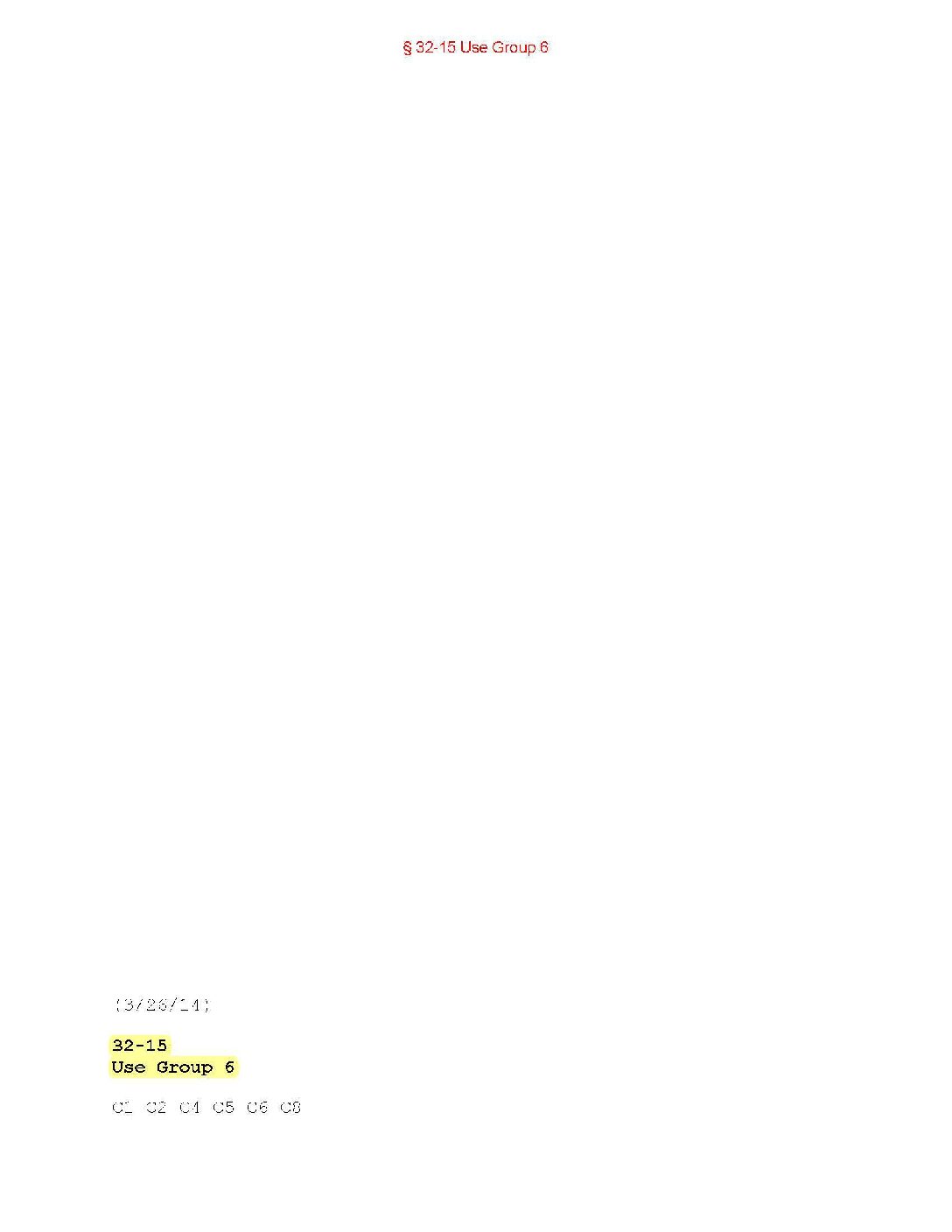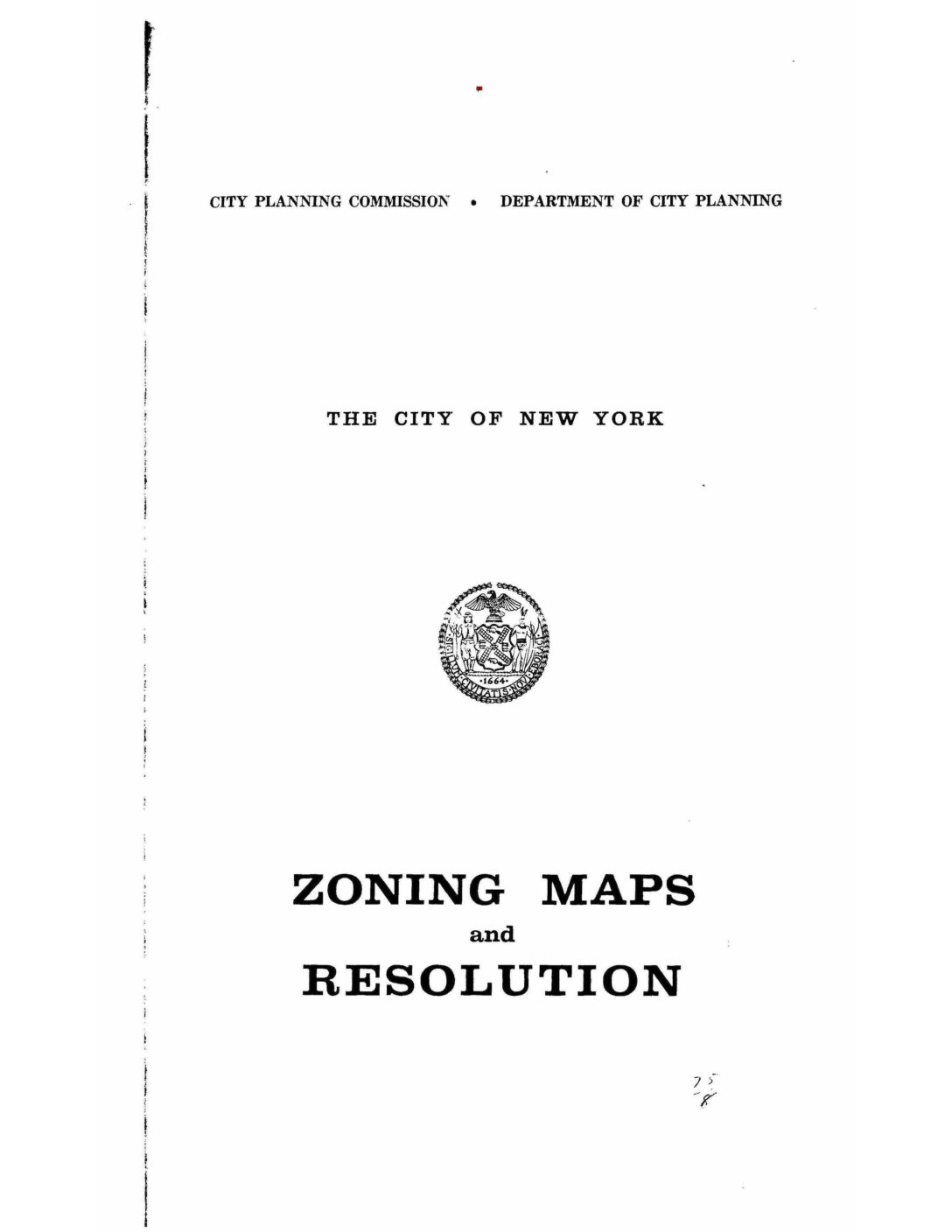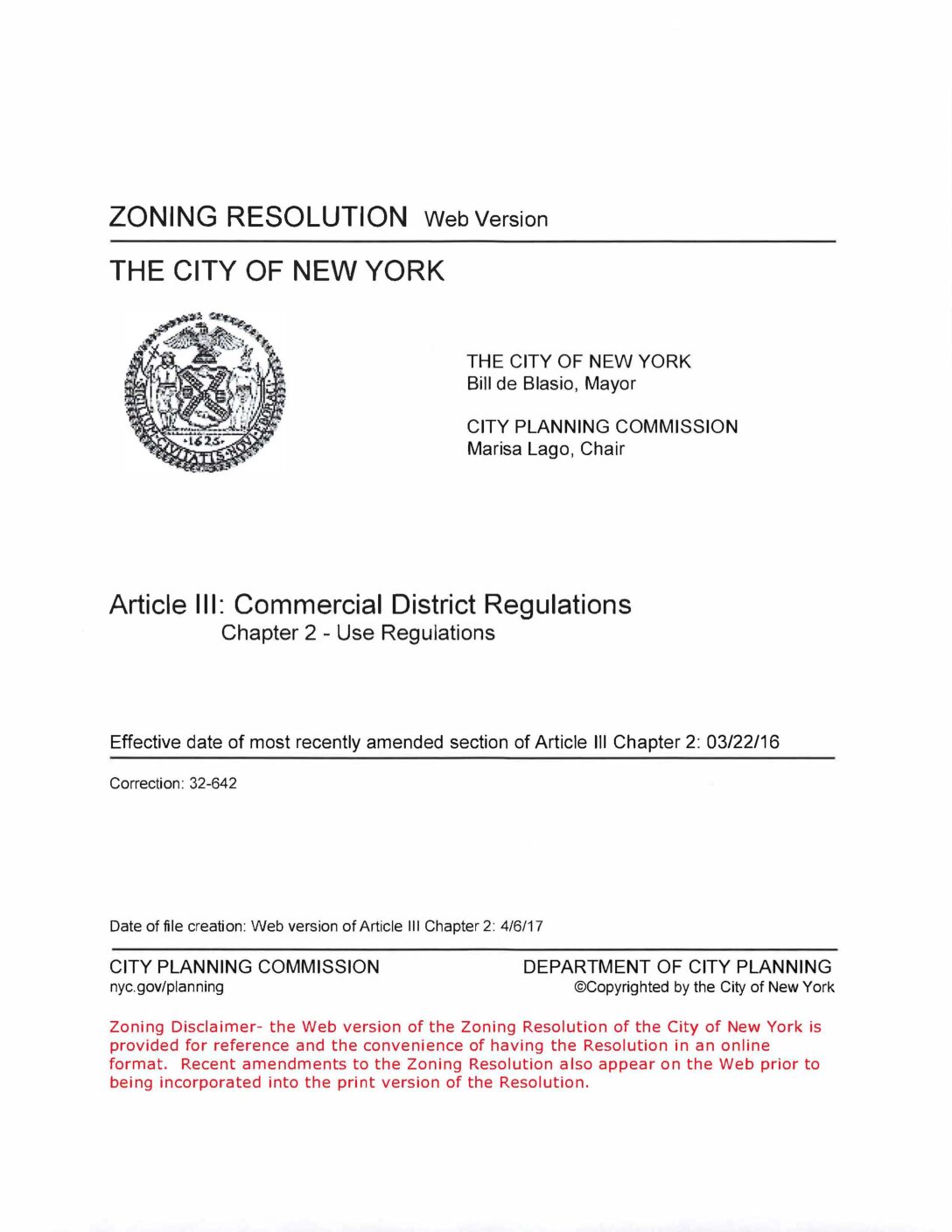Provisions of the New York City Zoning Resolution Concerning Regulation of Dancing and Music. Provisions related to dancing and music are marked in yellow. The provisions relating to dancing and music were added in 1990 as a result of the 1989 City Planning Report, the background of which is described in Chevigny – Gigs: Jazz… Continue reading Zoning Resolution – Provisions Relating to Dancing and Music
Document Category: Statute-Regulation Language
Text of NYC Zoning Resolultion
The Zoning Resolution consists of 14 Articles and 11 Appendices, plus 126 Zoning Maps, that establish the zoning districts for the City and the regulations governing land use and development. The version linked above is an easy to use web version to the ZR, with links to legislative history. Articles I through VII contain the use,… Continue reading Text of NYC Zoning Resolultion
Statutory Authority of New York State Liquor Authority to Regulate Dancing and Music
The SLA is subject to New York’s Alcohol and Beverage Control Law. Although the SLA can regulate “Cabarets” but only if the capacity exceeds 600. There is nothing it the ABC which authorizes the questions included in the questionnaires to applicants for Licenses or Changes in Method of Operation.
Zoning Resolution As of 1960 Prior to 1961 Revision
The 1916 Zoning Resolution as amended prior to 1961 included provision restricting the location of cabarets, defined to include dancing and music but not restaurants with fewer than three instruments. This provision was added to the 1916 resolution in 1955.
Use Group 12 §32-21
Use Group 12 applies in purely commercial and manufacturing areas and allows establishments with dancing.
Use Group 6 §32-15
Use Group 6 applies in mixed commercial-residential areas. In eating and drinking establishments, does not allow dancing or music if there is a cover charge, so that venues cannot cover the cost of hiring musicians.
1961 Zoning Resolution Use Groups – Music and Dancing
The 1961 Zoning Resolution introduced provisions allowing in Use Groups 6 and 12 musical instruments to be played without obtaining a cabaret license, limiting the number of instruments to three, and restricting the type of instruments to “piano, organ, accordion, guitar, or any string instrument.”
Use Groups – Commercial District Regulations Article 3 – All Use Groups and
Zoning Resolution use group regulations including regulations of Use Group 6, 10 and 12 are found in Article III Chapter 2 Use Regulations of the Zoning Resolution.
